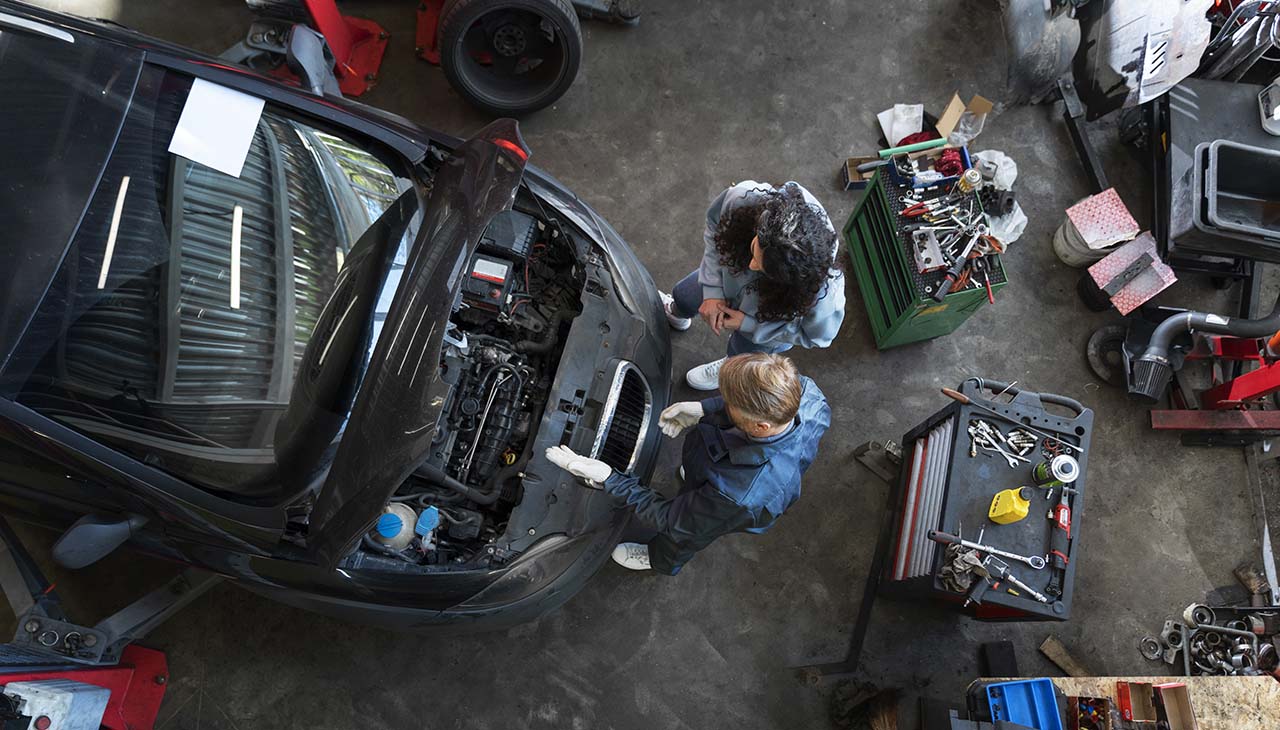Drive Safe Drive Smart Why Regular Brake Inspections Matter
Introduction
Ever felt that heart-stopping moment when your car doesn’t slow down as quickly as you expect? If you have, you know how crucial brakes are for safety. Regular brake inspections aren’t just for peace of mind; they’re essential for every car owner. This blog post will help you understand why taking care of your vehicle’s brakes should be a top priority. We’ll explore how brakes work, signs of wear, and the benefits of routine checks so you can keep driving safely.
Understanding Brake Systems
How Brakes Work
Brakes are your car’s most vital safety feature. When you press the brake pedal, a complex system springs into action. Most modern cars use disc brakes, which involve brake pads pressing against a disc to slow the vehicle. Some older models still use drum brakes, where shoes press against the inside of a drum.
The Role of Brake Fluid
Brake fluid is another essential component. It transfers the force from your foot on the pedal to the brakes themselves. If there’s a problem with the brake fluid, the whole system can fail. Regular checks ensure the fluid is at the right level and quality.
Types of Brakes
Understanding the differences between disc and drum brakes can help you recognize how your vehicle’s braking system works. Disc brakes are more common in modern vehicles because they cool down faster and provide better performance, while drum brakes are often found in older cars or on the rear wheels of some vehicles.
Signs That Indicate Brake Wear
Screeching Sounds
Have you heard a high-pitched screech when you brake? That sound is your brake pads telling you they’re worn out. Brake pads have metal indicators that make a noise when it’s time for a replacement.
Grinding Noises
If you hear grinding, it’s not just annoying—it’s a sign of serious wear. Grinding means the brake pads are so worn that metal is rubbing against metal. This can damage other parts of your braking system, making repairs more expensive.
Vibrations and Warning Lights
Feeling vibrations when you press the brake pedal can signal warped rotors. Additionally, if the brake warning light on your dashboard is on, don’t ignore it. It’s a clear indication that your brakes need immediate attention.
The Dangers of Neglecting Brake Inspections
Risk of Accidents
Neglecting brake maintenance can have dire consequences. Faulty brakes increase the risk of accidents, putting you and other road users in danger. Regular inspections catch issues before they become hazards.
Damage to Other Parts
Ignoring brake problems can also lead to damage to other vehicle components. For example, worn brake pads can ruin your rotors, leading to more costly repairs. Regular maintenance prevents these issues.
Financial Impact
While regular brake inspections cost money, they save you more in the long run. Addressing minor issues early prevents expensive repairs down the line. Investing in routine checks is a smart financial decision.
How Often Should You Inspect Your Brakes?
General Guidelines
Experts recommend inspecting your brakes at least once a year. However, this can vary based on your driving habits and conditions. Frequent city driving with a lot of stopping and starting may require more frequent checks.
Vehicle Type Considerations
The type of vehicle you drive also affects how often you should inspect your brakes. Heavy vehicles like trucks may need more frequent inspections compared to smaller cars due to the added strain on the braking system.
Environmental Factors
Environmental conditions can impact brake wear as well. If you drive in hilly areas or harsh weather, your brakes might wear out faster. Regular inspections help adapt to these conditions and keep your brakes in top shape.
DIY vs. Professional Brake Inspections
DIY Inspections
Some car owners prefer to inspect their brakes themselves. Basic checks like looking at brake pad thickness and fluid levels can be done at home. However, DIY inspections have limitations and may miss underlying issues.
Professional Inspections
Professional mechanics have the tools and expertise to conduct thorough inspections. They can identify and fix problems that DIY checks might miss. Investing in professional inspections ensures comprehensive care for your brakes.
Tools and Expertise Needed
Conducting a proper brake inspection requires specific tools and knowledge. Professional mechanics are trained to use these tools and can provide a more accurate assessment of your braking system’s condition.
Choosing the Right Brake Parts
High-Quality Parts
When replacing brake parts, opt for high-quality options. Cheap parts may seem like a good deal, but they wear out faster and can compromise your safety. Investing in quality parts is crucial.
OEM vs. Aftermarket Parts
OEM (Original Equipment Manufacturer) parts are made by your car’s manufacturer and are guaranteed to fit and perform well. Certified aftermarket parts can be a reliable alternative and might offer better prices without sacrificing quality.
Safety and Performance
Using the right parts ensures your brakes perform optimally. Reliable brake components provide better stopping power and last longer, keeping you safer on the road.
Conclusion
Regular brake inspections are an essential part of responsible vehicle ownership. They ensure your car’s braking system is functioning correctly, preventing accidents and expensive repairs. By understanding how brakes work, recognizing signs of wear, and choosing high-quality parts, you can keep your vehicle safe and reliable. Don’t wait for a problem to arise—schedule your brake inspection today and drive with confidence. Prioritizing your safety and the longevity of your vehicle starts with taking care of your brakes.
